When I recently shared my Black history lesson plans for our 20th century studies, I included a list of picture books that I’m using for my 1b (Year 1, first grade) child. The books cover some key people and events from the Harlem Renaissance and Civil Rights Movement, and my family has enjoyed them all, but they are definitely not the first books we use to begin studying African American culture.
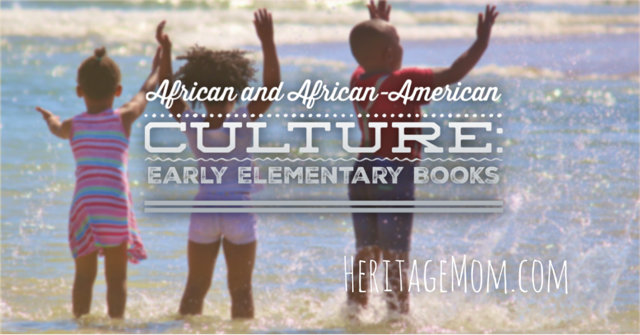
Before sharing books about the “struggle,” my kiddos have had extensive exposure to books that simply ground them in who we are and where we come from. I consider this to be an ideal approach for children of all backgrounds as no child needs to be introduced to Black people as a group of downtrodden individuals who have had to struggle and fight for every right.
I think children – yours and mine – should first read about how Black people’s lives transcend the struggle. We should introduce them to the fullness of who Black people are: fellow humans who love, live, and laugh… who eat, visit, and play… families who experience the joys, sorrows, trials, and triumphs common to all mankind.
For early elementary, my main goal is to introduce African and African-American cultures vs. history in the technical sense. Black history will make a guest appearance here and there, but I’m mostly focused on choosing books that offer up the following ideas:
- Africa is a diverse continent full of many different countries and people with their own customs, languages, food, and more.
- The ancestors of most Black Americans came from Africa, but they have been a part of America from the very beginning so Black Americans have unbreakable ties to both places.
- African Americans are typically bi-cultural. They share a strong American identity with others across various races, and they also have a distinct culture with its own norms and practices – some of which are rooted in African traditions and some of which are distinctly American.
- African-Americans are a very diverse group with many different backgrounds and experiences; there is no “typical” Black person, just as there is no “typical” white person.
- Black families are much like families everywhere. Black parents love their children and want the best for them. Extended family members (grandparents, aunts, uncles, and cousins) often play a significant role in the lives of Black children. Black children adore their parents and like to play, have fun, and find new adventures around every corner.
With these goals in mind, below is a list of some of the books that I’ve used. This is by no means an exhaustive list. We live this day in and day out. Our home library is chock full of books about Black people (about all people actually), and we’ve read most of them many times over. I can’t possibly list every wonderful title, but I do feel that this framework is an excellent start as it will show you the types of books to look for.
Disclosure: As an Amazon Associate, I may earn commissions from qualifying purchases using these links, at no additional cost to you
Picture books about African culture
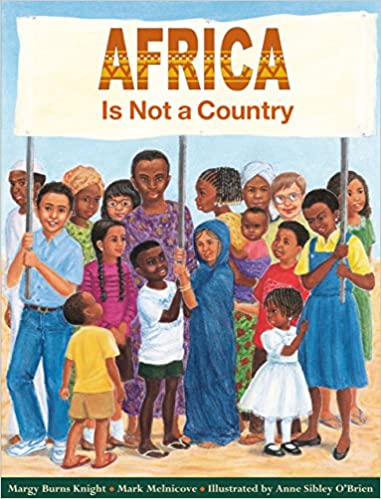
I always like to start with Africa Is Not a Country where children can “enter into the daily life of children in the many countries of modern Africa. Countering stereotypes, [it] celebrates the extraordinary diversity of this vibrant continent as experienced by children at home, at school, at work, and at play.” As we go through this book, a little at a time, I include other picture books focused on a specific country discussed because Africa is Not a Country only provides brief glimpses into the lives of the various people. So when we read the page about Ethiopia, we also read Fire on the Mountain and The Perfect Orange that week. After the page on Mali we read Yatandou, and we read The Butter Man after learning about Morocco. My Great Grandmother’s Gourd is our choice for Sudan. For Kenya, we use Bringing the Rain to Kapiti Plain along with the nursery rhyme The House That Jack Built as they’re written in the same style. We continue on this way until Africa is Not a Country is complete. If you’d like to follow the lesson plans that I used for my kids, they’re all available in my Amazing Africa! Heritage Pack along with chapter books and relevant video selections.
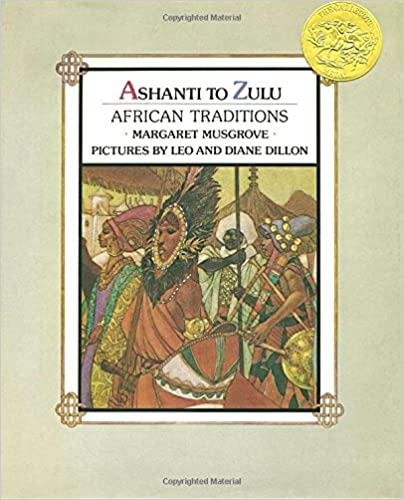
After completing Africa is Not a Country, we read about 26 African tribes in Ashanti to Zulu – one for each letter of the alphabet. I use this as an opportunity to include more picture books about Africa – especially ones that I can’t tie to a specific country – along with other books illustrated by Leo and Diane Dillon, the illustrators of Ashanti to Zulu. For example, we read Why Mosquitos Buzz in People’s Ears (a West African tale illustrated by the Dillons) and Aida told by Leontyne Price (based on the opera set in the old kingdom of Egypt and also illustrated by the Dillons) during this time. As a side lesson, we talk about the job of an illustrator, I share a little info about Leo & Diane Dillon, and I always show a photo. He was Black and she is white, and I think it’s really neat that they collaborated on these beautiful books about Africa. Africa Dream (sweet but very short with few words), Mufaro’s Beautiful Daughters, It Takes a Village, Sosu’s Call, and Jambo Means Hello are a few others that we read after the Dillon books.
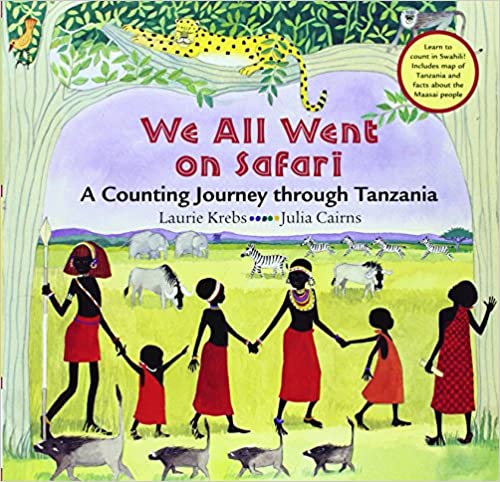
And for your youngest learner: We All Went on Safari: A Counting Journey through Tanzania – Join Arusha, Mosi, Tumpe and their Maasai friends as they set out on a counting journey through the grasslands of Tanzania. Along the way, the children encounter all sorts of animals including elephants, lions and monkeys, while counting from one to ten in both English and Swahili. The lively, rhyming text is accompanied by an illustrated guide to counting in Swahili, a map, notes about each of the animals, and interesting facts about Tanzania and the Maasai people.
Picture books about African American culture

These are books that give children a little glimpse inside African American culture from a historical perspective, and they typically focus on some elements of family and tradition. Ma Dear’s Aprons, From Miss Ida’s Porch, Grandpa’s Face, and The Patchwork Quilt are examples. And titles like Brown Honey in Broomwheat Tea and From a Child’s Heart (poems written as prayers to God from a child) are perfect additions for poetry time. They are contemporary poems and very different than the traditional poems found in books like Favorite Poems Old and New or A Child’s Book of Poems, so I would read them “in addition to” but not “instead of.”

Colors Around Me is a book I absolutely love. It’s older and very basic, featuring an illustrated portrait of a single child on each page. Under the portrait it tells the child’s name and compares their skin color to something familiar (“Emily is brown like chocolate cake. Sharon is tan like peanut butter. Victor is pink like bubble gum.”), and it ends with a brief description of the term “African American” and how they’re all beautiful “just like you” and “just like me.” I really appreciate that this book highlights differences instead of shying away from them. Yes, we all have different skin. Cool! Neat! Interesting! Awesome! Beautiful! It gives young children permission to talk about skin color in a normal, non-threatening way. The Colors of Us is very similar, and I like it even more in some ways because the skin color references are in story form. Use the “Look Inside” feature on Amazon to see inside both of these unique books. Check out my posts on Teaching Colorism for more book ideas.
And for your itty-bitty one: Cassie’s Word Quilt – In this 32-page lap book we join Cassie…on a tour of her home, neighborhood, and school, dozens of new words are introduced with simple labels throughout.
Familiar stories retold with pictures of Black children
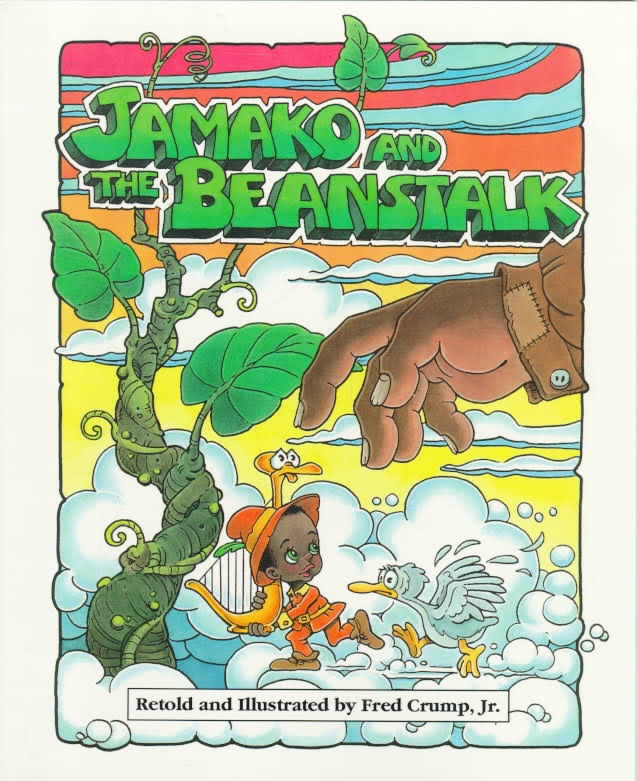
This is a category of books that I’ve worked hard to collect. They are familiar stories that I want my children to know, but the illustrations feature brown-skinned children so my family can join in the common stories and literary themes shared by all American children while still feeling like the stories are not just for white children. I think these stories are important for white kids as well because I can’t tell you how many times a white playmate has told one of my children that some famous make-believe character “is not Black.” Thankfully, this makes my confident kids giggle because they know that fictional characters can be whatever we make them. So consider including books by Fred Crump, Jr. like Jamako and the Beanstalk, The Little Mermaid, and Little Red Riding Hood. Most are only available used, but we’ve been able to collect six of them inexpensively. Cendrillon: A Caribbean Cinderella, Leola and the Honeybears, and the Black Mother Goose Book are some of the others we enjoy. Check out my Melanated Tales Heritage Pack for many more examples of books like these.
Contemporary stories featuring Black children who are just being children vs. being Black
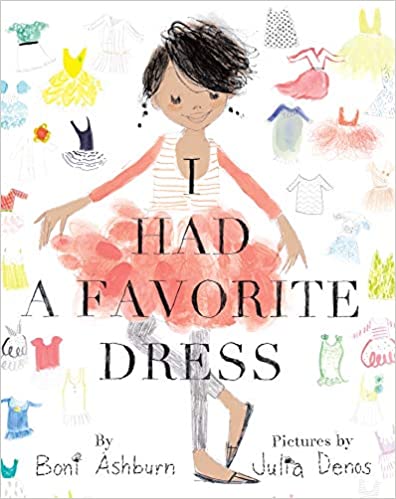
This category is one of the most important for me. I think it’s easy for us to get into a pickle with Black books. So many books with Black characters feature a storyline about being Black. And that’s okay. We read those books all the time, but…
Do ALL of the books have to be about being Black?
Can’t Black kids be involved in a funny mystery?
Or have a pet lizard?
Or look forward to Grandma’s famous chocolate chip double-fluff pancakes?
Are these innocent, sweet, child-like moments reserved only for white characters?
I certainly hope not!
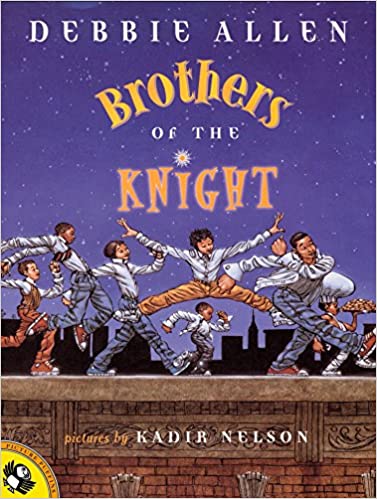
Sadly, books about children who happen to be Black become harder to find as children get older, but there are many to choose from during the early elementary years, and I’m always on the hunt for life-giving books to include and savor. Brothers of the Knight, Dancing in the Wings, The Hello Goodbye Window, The Last Stop on Market Street, I Had a Favorite Dress, Luke Goes to Bat, The Talking Eggs (My kids love this story, but please pre-read to ensure appropriateness for your family – it has a disrespectful child & mean mother who learn their lesson a la Cinderella, and there are fantasy elements with talking animals and a (kind) old lady who can remove her head), We Are Brothers, Princess Cupcake Jones and the Missing Tutu (I once read this book 19 nights in a row because my daughter LOVED it just that much! It’s not a Charlotte Mason-y living book, but it made my little girl so happy. Making memories matters.), Amazing Grace series, Stand Tall Molly Lou Melon, Keat’s Neighborhood (So amazing for little boys especially!), and Ada Twist Scientist are all nice picture books. For a couple of these, I can’t say definitively that the characters are Black, but they are definitely ethnic, and that works for me! Search here for many, many more of these Life-Giving Books for Black Children. And if your kiddos are ready for chapter books, take a look at these lists that I created: Chapter Books: Black Boys Having Fun and Chapter Books: Black Girls Just Being Kids.
For wee ones: Big Hair Don’t Care, I Am Enough, and Just the Two of Us are a few we enjoy.
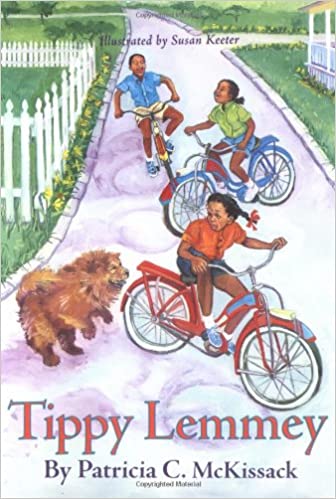
For early readers, I love books like Tippy Limmey, Anna Hibiscus*, Little Bill Books for Early Readers, The No. 1 Car Spotter series, and Lulu’s Animal Adventures.
In addition to traditional stories, I also like to have little “learning” books with brown faces like How a Seed Grows and the Izzy’s Imaginarium series laying around the house. My little guy will pick up books like these and bring them to me to read so he can “do school” like his big siblings. Super sweet.
This is a sample of the types of books I focus on for early elementary. I own every book here except two of them, and I consider these foundational books for younger children, but my older elementary kids still love these books, too. In fact, they were crowding around me as I wrote this post because they saw many of their favorites scattered about. We start with these, but we never really stop reading them. We only add on as they grow in understanding and maturity.
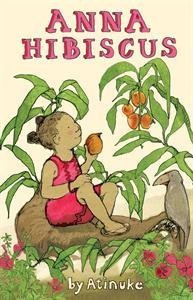
*Note: In the Anna Hibiscus books, Anna is simply from “Amazing Africa” with no country specified. I normally don’t care for that type of approach, particularly after spending so much time teaching my kids that “Africa is not a country.” However, I watched an interview with the author, Atinuke, who is Nigerian, and she explained that she wanted Anna and her family to represent financially secure modern African families that are found all over the continent. The storylines and details could occur in any number of African countries. I’m paraphrasing, but after hearing her explanation I became okay with Anna being from “Amazing Africa,” in this instance. I did explain what Atinuke said to my kiddos though so they would understand.
What comes next?
In our home, the next step after the aforementioned books is learning about specific people and events through picture book biographies and historical stories. I collect the 100 Best Children’s Books for African American History Month (mostly focused on #1-60 for elementary), and we read them on a regular basis. These, along with many more life-giving books, make up the majority of our black history and culture reading in the early elementary years. And during this time, I take careful precautions to pre-read every single thing in order to avoid exposing my youngest children to “really good” books that hurt.
I hope this helps, and I look forward to hearing your thoughts. Happy reading!
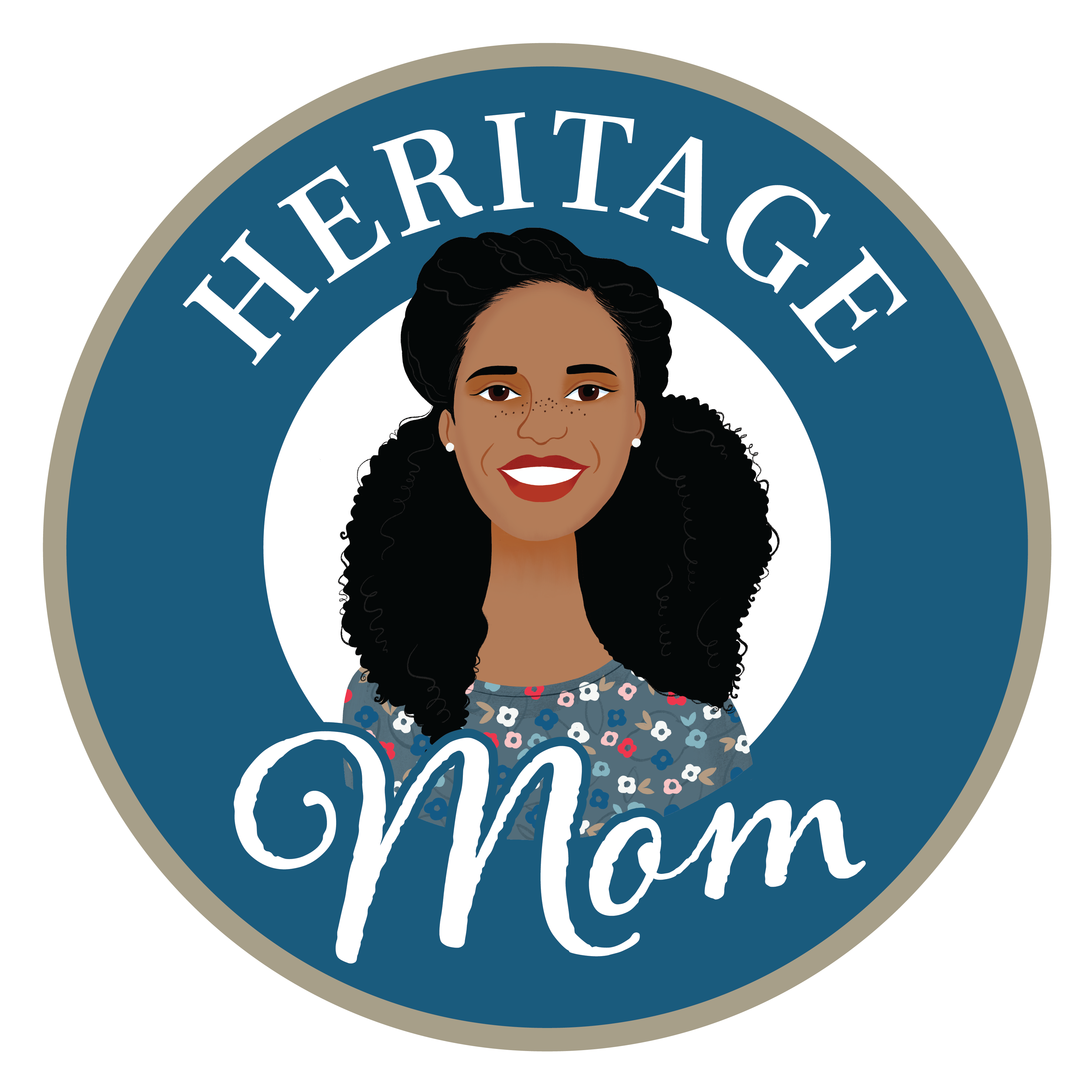


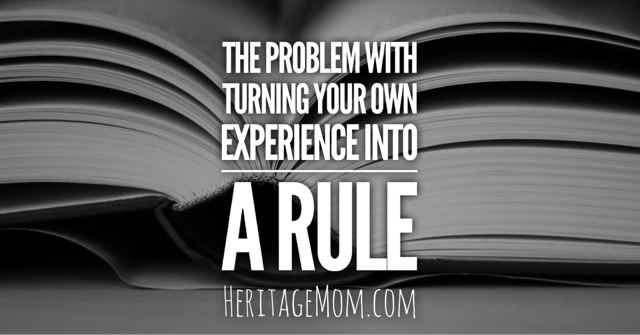
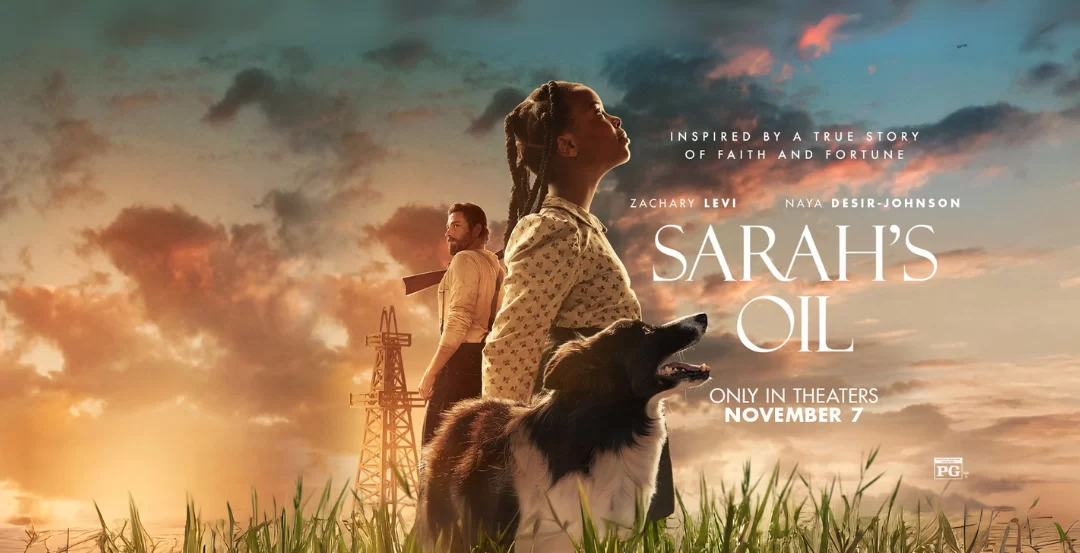

Just plain beautiful!!! I love the approach.I have a 1st grader, I’m going to try this with her. We’ve done some black history with the Charlotte Manson technique. I love reading your post!!!!!! Keep them coming:-)
Bad Dog Flash. Large black family having not a black issue, but rather a bad dog issue. It’s hilarious. We still call our own dog Flash when he’s doing something wrong. It wasn’t intentionally borrowed from the library because it’s a “black” book however. In south carolina they’re just books featuring people who are diverse. Growing up in PA though I don’t recall a diversity of books.
Wow!! I can’t thank you enough for this!! It can be a struggle figuring out what materials are appropriate and affirming by being just plain interesting and fun for our boys. Thank you thank you thank you!
You’re so very welcome! It makes me happy to see you happy about these books.
Thank you, Melody! I hope your first grader really enjoys some of these books and that you enjoy applying CM principles while teaching her.
Love this amber – as I usually do! So we’ll thought out ☺️. Would be interested in chapter books you’d recommend for your oldest (since that’s my oldest’s age range…..) maybe in another blog post 🤞
Thank you for always being so supportive, Valerie. Here are some historical fiction chapter books that my oldest has really enjoyed: https://heritagemom.com/2020/03/05/african-american-historical-fiction/. Be sure to read the note at the bottom because I’m not sure what your family has already discussed or may want to discuss before she reads some of them. They’re really good though!
I love this list and the one about historical fiction. I would also love some other chapter books that maybe your oldest has read when you have time.
Specifically I would love one that has black children in a fun situation, just living life. I lead a book club for our local (mostly white) homeschool group – 2nd-5th graders mostly – and we have read some classics that had me afterwards (because I hadn’t read them in years) discussing how this or that was not how we should see other people with the kids. I’m trying to avoid that next year but I would also like to include some more diverse books. I try to avoid heavier topics since they are reading these on their own and I’m not trying to add extra on the moms with this club. So I’m not sure if the historical fictions ones are the best – although they are going on my 8 and 9 year olds reading list. Anyways, thank you so much for the books you have here – this work is so helpful. I don’t even know where to start in compiling this kind of thing and definitely can’t preread everything my 9 year old reads.
Nicole, I’m really glad that you asked this question because it sheds light on an important issue. There are many picture books about black kids just being kids, and there are some early chapter books thfor the younger elementary students, but it starts to become much more difficult for the higher end of your book club range. I’m going to write a post just for you (wink, wink) this week with chapter book recommendations for books that aren’t focused on “the struggle.” One thing you’re going to have to consider though is whether you’re willing to step away from the classic literature model. Many of the chapter books featuring black children just being children aren’t written at the same literature “level” (Is that the right word?) as most of the books that are on typical lists of living books. This has been a REAL struggle for me. I want high-quality living novels about black families living their regular lives. This is absolutely not a knock against the many awesome authors who are writing literature with black kids because I’m thankful for them. It’s just a hard pill to swallow that we have to change the qualifications for books when they feature black characters playing and laughing and being kids because we’re so desperate for that type of thing. I’ll have the post up for you within a week. In the meantime, you may want to read this post: https://heritagemom.com/2018/01/02/why-living-books-are-not-enough-for-black-children/
Thanks for this list! I had a hard time finding lists like this during black history month. I had read to introduce the positive aspects of Black history before the more hurtful things when teach little ones so definitively gonna find some of these books.
Hi Valerie! I totally didn’t have myself together for Black History Month, lol. I’ll have to shake the dust off of this and re-post it again next February. I hope your family enjoys some of these 🙂
Amber, hats off to you for composing such an amazing list of books that will allow our brown kiddos to identify with the characters for a change . I found it such a challenge when we go to pick out books at the library where the main character is African-American. Thank you for this list as it has definitely done the leg work for me. You are amazing!!!!
Thank you, Tika! I hope your little guy enjoys these books as much as my kiddos have.
So beautifully written, thank you for sharing your thoughts and book list!
You’re welcome! Thank you for reading, and I hope it blesses your family.
Thank you for this list. I’m working hard to add lots of wonderful books to my lending library and appreciate your recommendations. I’ll look through your posts for more. I’m amazed at some that I’ve found recently that are such beautiful books! Blessings to you and all you do!
Thank you so much, Sandy. Lending libraries like yours are contributing greatly to making books accessible to homeschoolers. I admire that you’ve taken up the charge to include books with diverse characters and authors.
Thank you for such a thorough and thoughtful analysis of selected books for different purposes and different age groups.
Please consider adding Brown Sugar & Spice Books to your resource list… a Black owned and operated online bookstore specializing in true stories about people of color.
http://www.brownSSbooks.com
Jacqueline! I can’t believe that I’ve never seen this before. I will absolutely share it. I LOVE YOUR WEBSITE!!!!! I’m just really excited. First of all, you carry so many of the books that I’ve recommended on here over the years. Plus you have many more that I’ve been wanting to read. Thank you for reaching out to me.
I so appreciate your commentary on each book!
And your comment, “These are not affiliate links, and I own every book here except two of them. I consider these foundational books. . .” I wish they WERE affiliate links!
I’ve been hearing that a lot, Alexandra. I’m going to get the whole affiliate thing down! I used to feel like it made the recommendations less legitimate if someone was getting paid, even a little, to make them but some friends (and you!) have opened my eyes to that not being the case. Thank you.
Thank you for this post! Awesome suggestions! I recently found a used copy of Mufaro’s Daughters to read to my daughter as I remember loving the illustrations and the story as a child when it was read to us in Elementary school! Definitely going to get some of their other books.
Mufaro’s Daughters is really one of our favorites. There are so many wonderful books. Sometimes we just have to remind each other because we’re all so busy (and understandably so!)
One of our favorites too!! Thank you so much for this and so many fantastic lists and resources. All the love and dedication you have poured into educating your children in a way that nurtures them and now it spills over to bless so many lives! Many blessings on you all.
Thank you so much for that encouragement. Notes like yours keep me going!
Hello, I’m returning to homeschool this year and am wanting to use the CM method with my b/g twin 1st graders. I have homeschooled before with my older children but not CM and my problem is scheduling and knowing what books to use. When I’ve looked at open and go curriculum of course there aren’t many books for my black children. I wanted to know if you have a schedule of how you read the books you use and incorporate them into your day? What discussions and projects do you use? I just need help incorporating CM into my daily routine with my children.
Hi! I still use a curriculum for most subjects, but I swap out many of the books for something similar with black & brown voices while leaving some of the really good ones recommended by the curriculum. So if they recommend 4 biographies, I’ll keep 2 and replace 2. If they recommend 3 historical fiction books, I’ll make sure that 2 of them include other voices or experiences. I have an awesome resource coming VERY SOON that will be perfect for your 1st graders. It will give you exactly what you’re looking for, and I’m really hoping to have it up on the website this week.
We’re starting 1700’s/Revolutionary War era next year and I’m so glad I stumbled on your site now! If you could pick a few summer “must-reads” before we jump into that, I’d love to hear what they are! Sooo many good books to choose from.
I’d love to make a few recommendations. How old are your kids?
9(g), 7(b), 4(g), and 2(g). Thank you!!
What other history sources do you use for your younger kids? Mine are 7, 5, and 2.
Hi! For that age group, I use my Joyful Generations Heritage Pack (in my shop). It covers a lot of historical figures. I also use other picture books to help set the stage for each historical time period. Here’s an example of picture books for the 1800s (https://heritagemom.com/2022/02/13/picture-books-about-slavery-and-freedom/), but you can find links to the other time periods on this page: https://heritagemom.com/heritage-mom-book-recommendations/. If you mean beyond Black history, I spend all of 1st grade studying Native Americans using picture books from our shelves and the library. In 2nd grade, I fold my kids in with their siblings and we include general books (that are almost always missing Black and Brown voices) – no particular curriculum.
Hi Amber. What would you recommend as a book for HIGH SCHOOL kids to learn African/African American culture. Something so that they can truly learn the good and wonderful things that make up Black culture/heritage/history, not only the slavery/racism side? Those are definitely important to learn and understand, but what about teaching all of the wonderful things that make up this beautiful culture? What is out there to use for older kids/adults?
I recommend digging deeply and generously into the Harlem Renaissance. However, there’s no direction you can take very far in Black American history/culture without encountering the trauma of racism. I personally love this book as a spectacular starting place, but it includes the whole story – not just the beautiful parts: https://www.amazon.com/Harlem-Stomp-Cultural-History-Renaissance/dp/0316496332. We need more Black books that highlight the wonderful aspects!
This is incredibly helpful, Amber. Thank you so much for sharing such a well thought out list. I’m a black mom and am new to the Charlotte Mason world so I’m thinking through how to approach history with a form 1 student. Would you recommend going through the books and concepts in this post first, and dive into the history cycles afterwards? Would this list be used in place of history in the early years?
I’m so glad that you find it helpful! For Form 1, I have several resources for you to check out. Look in my shop and read about: (1) Amazing Africa – a wonderful geography study for early elementary. It incorporates Africa is Not a Country and some of these other books. (2) Melanated Tales which will cover fairy tales, folk tales, tall tales, etc with Black characters. These can be read aloud 1-2x a week or shifted to bedtime stories. (3) For history, specifically, you can start Joyful Generations. You can take your time with it, and stretch it over multiple years. These resources will have you all set for Form 1! Another approach is to look at the Book Recommendations tab, and check out the Black history books by time period to see what else I was using with my kiddos at that age. Please let me know if you have any questions once you’ve taken a look!